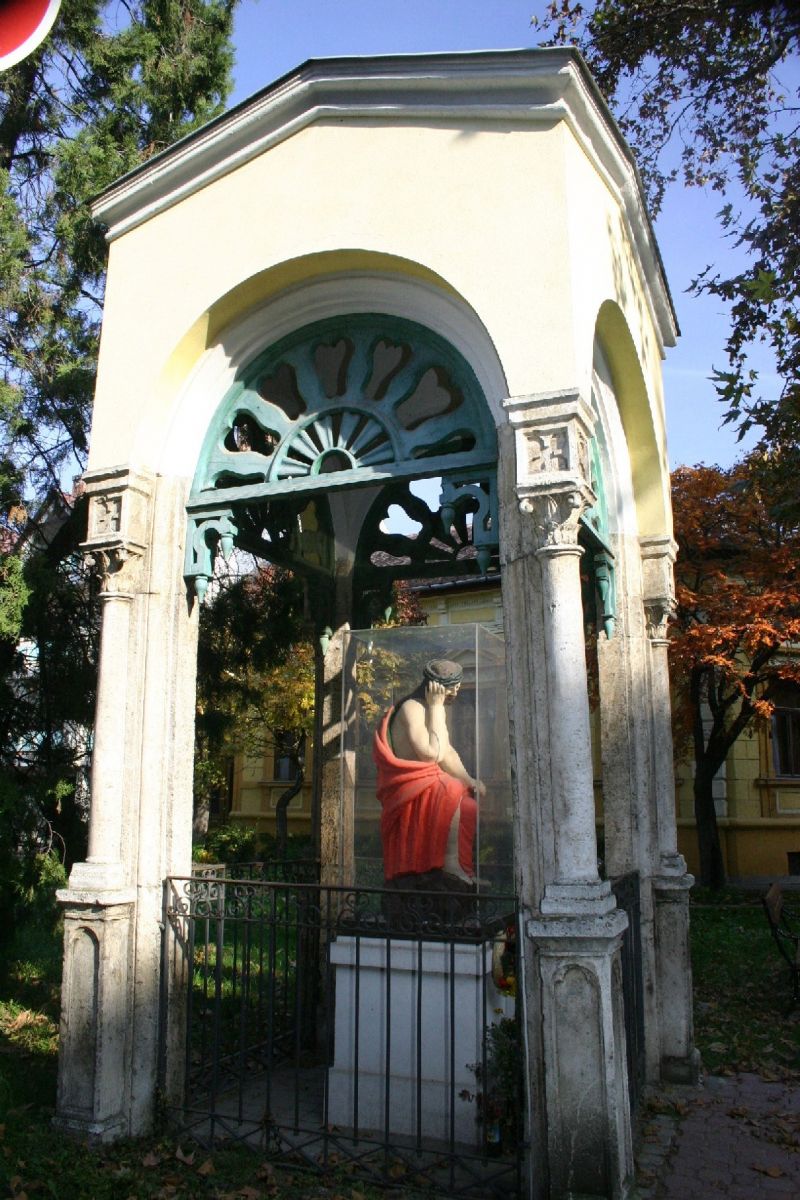Great Downtown Church – Franciscan Church
The Baroque style Roman Catholic church was built according to the designs of the Eger architect Giovanni Battista Carlone between 1724 and 1757, acquiring its present form in the 1880s.
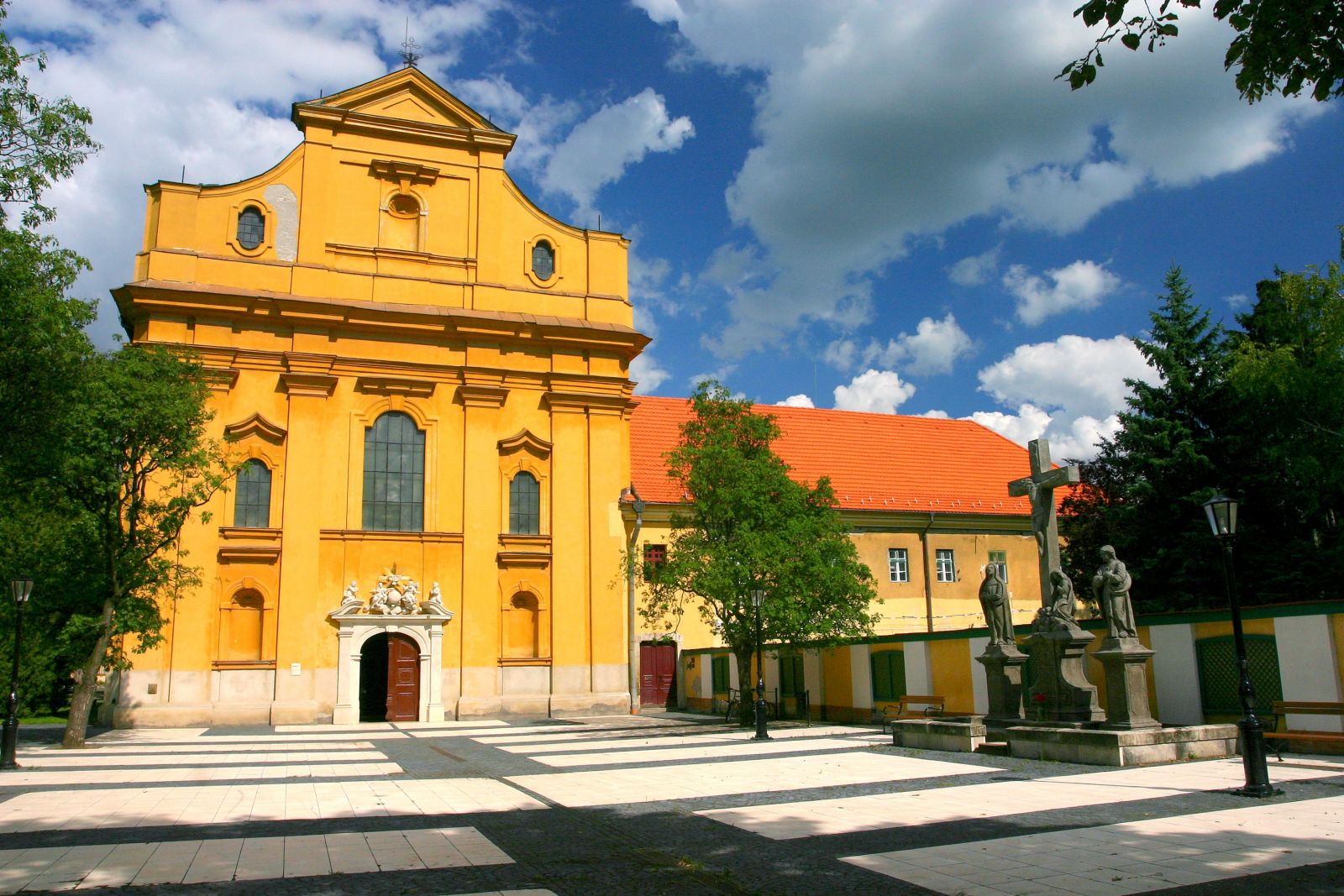
The sculpture of the Holy Trinity above the main entrance was put in place in 1757. The four-vaulted nave boasts eleven altars; its walls are decorated with colourful frescoes depicting the Stations of the Cross. The pulpit, richly decorated with Baroque ornaments, is especially beautiful.
Visits by appointment.
www.szolnok-belvaros.vaciegyhazmegye.hu
The building of János Damjanich Museum – former Hungarian Royal Hotel
The Damjanich Museum was the last one to be established in the Alföld county seats. The building completed in 1860, has accommodated the permanent and temporary exhibitions since 1952. The exhibition halls give insights – among others - into the traditional life of Jazygians, Cumanians or to the art of the painters, László Mednyánszky or Ferenc Chiovini.
Guided tours by appointment.
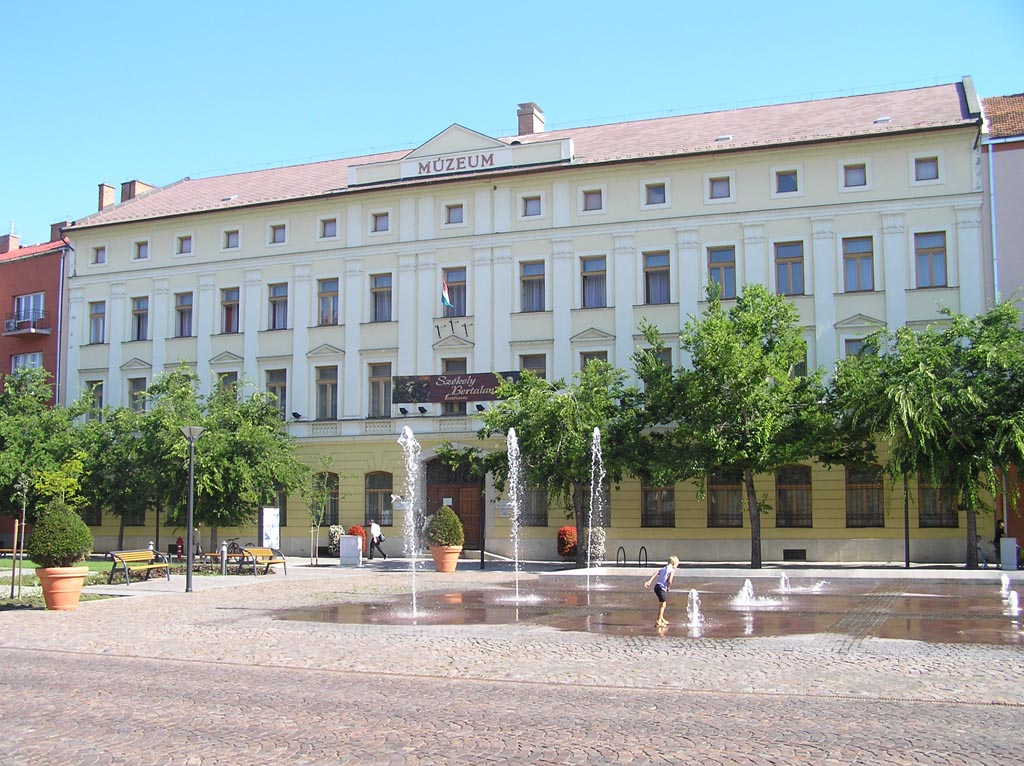
The building of the Franciscan Grammar School
The Classicist style building was completed by master carpenter Márton Szvitek in 1835. The hipped-roof, two-storey building forms a Baroque set of buildings together with the Downtown Church and the Franciscan Monastery. On the central prisalith (a protruding architectural element) of the main facade, the pillars run up to the top of the building. Today, it functions as the Scout Centre with its adjacent buildings, earlier it also served as a student domitory and culture centre.
Address: Szolnok, Templom u. 12.
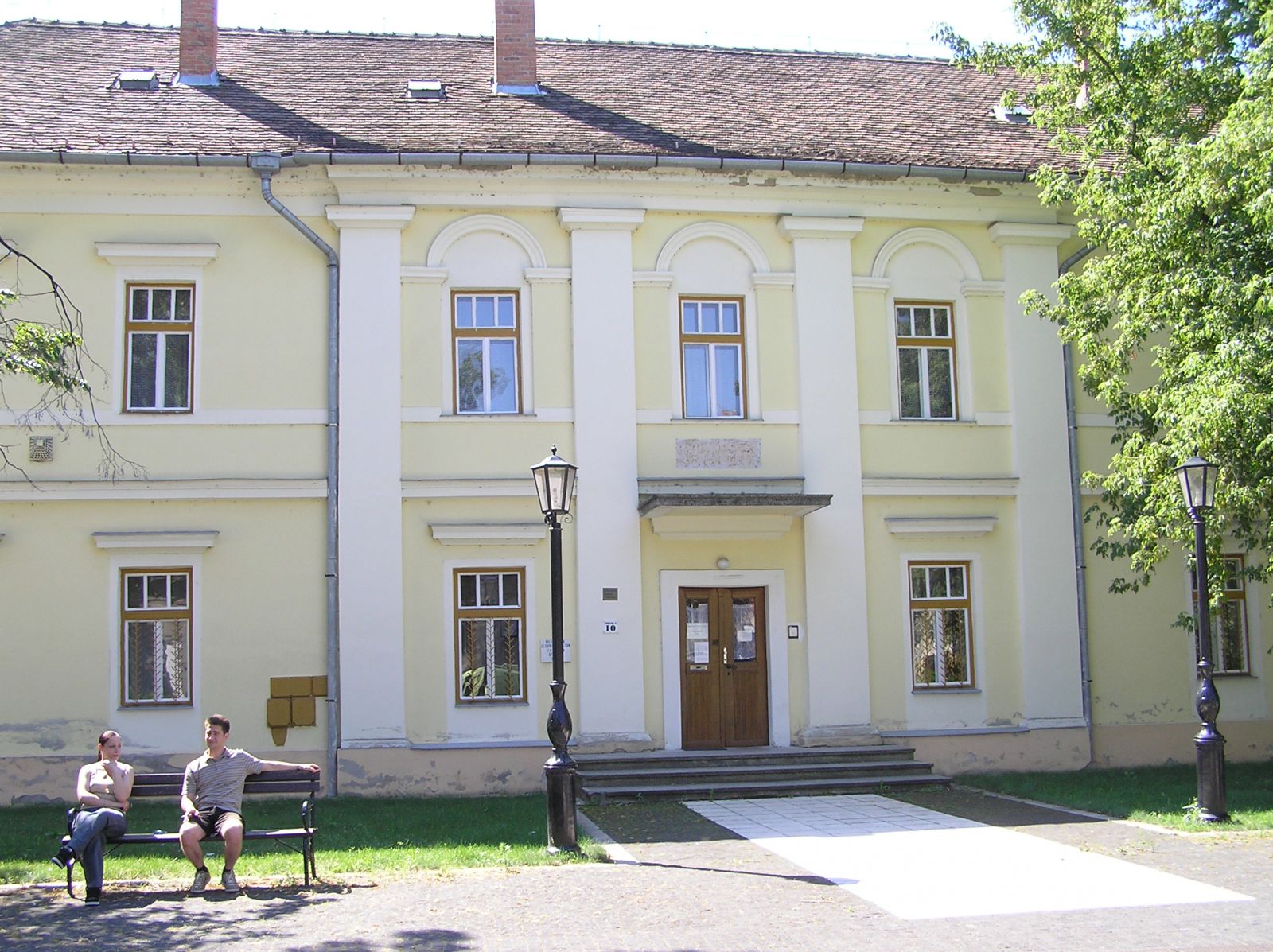
Franciscan Monastery
The building connected to the Downtown (formerly Franciscan) Church from the south side, was completed on the designs of Giovanni Battista Carlone around the middle of the 1700s. The two-storey, one-tract building surrounds a rectangular atrium and its corridors are barrel-vaulted while the rooms have cross vaults.
Address: Szolnok, Templom u. 8.
Calvary
The stone statue erected in 1794, depicts Maria Magdalena kneeling at the foot of the Cross emerging from the rock, with the sculptures of the Virgin Mary and the Evangelist John standing next to her on separate pedestals. The Baroque group of sculptures was formerly surrounded by a wrought-iron fence, which has since been dismantled.
Address: Szolnok, Templom Street (in front of Downtown Church)
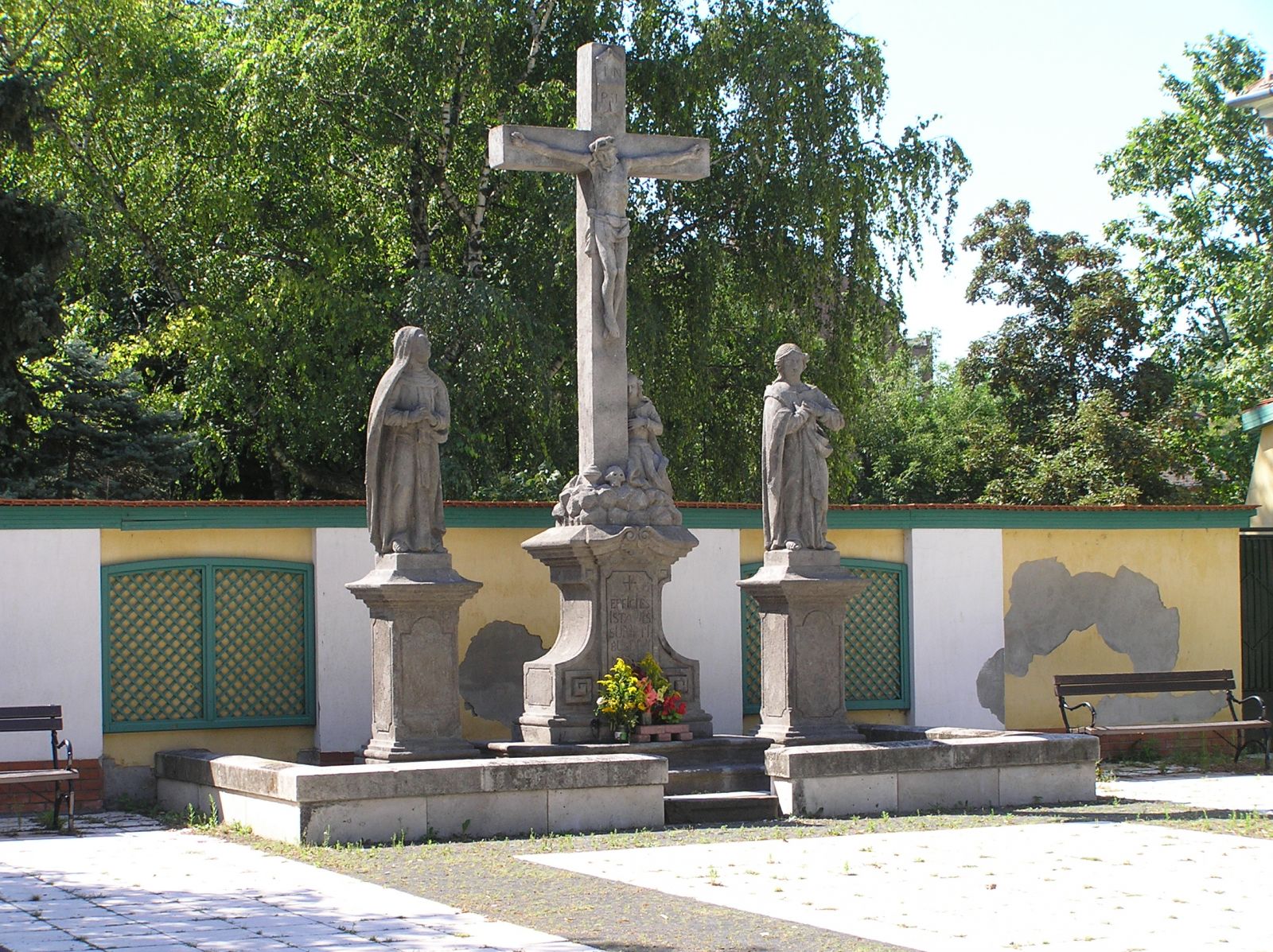
Residential building
Thanks to its front garden the L-shaped, one-storey building with its hipped-roof stands farther in from the line of the street. On its street front it has a central prisalith closed with a tympanum, its verandah opening to the courtyard has been fitted with glass. Today it houses shops.
Address: Szolnok, Szapáry u. 17.
County Hall
The two-storey, eclectic style building was completed in 1878, on the designs of architect Károly Benkó. With its arcaded formation on the groud floor and loggias on the first floor, the main facade of the building boasts the coat of arms of the county. Inside the builing, the impresive grandeour of the stairway and the classical beauty of the main ceremonial hall deserve attention. The back facade of the building was designed by the artist-architect Lajos Zombori in 1926.
Visits by appointment.
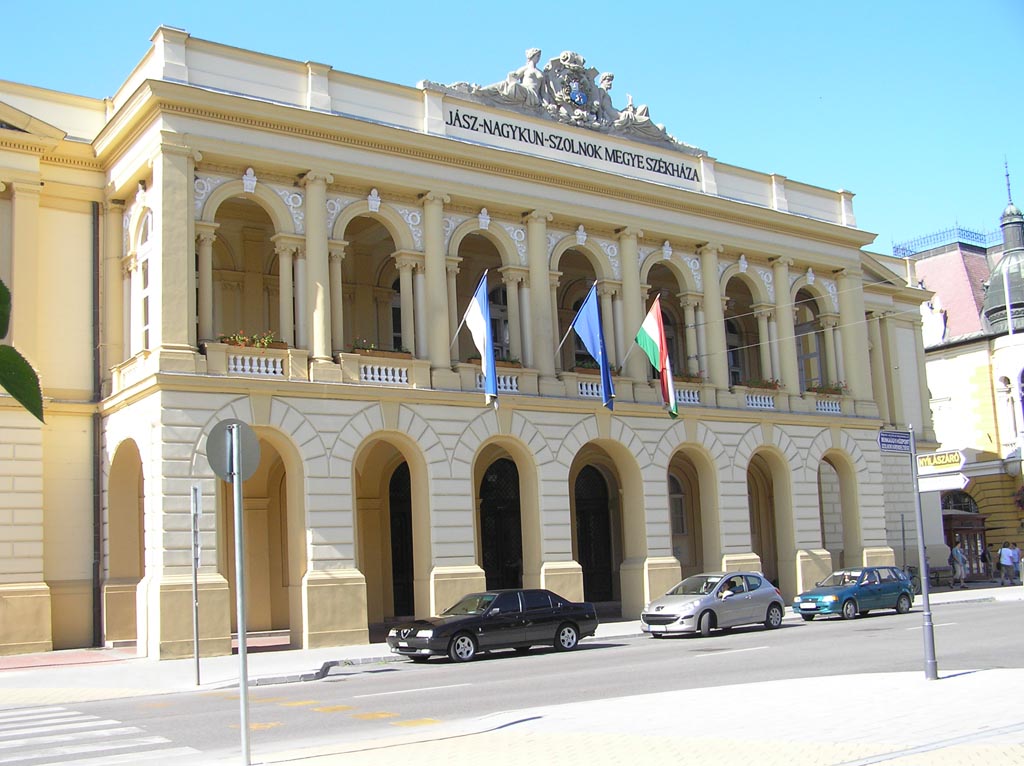
The statue of the Brooding Christ
The sculpture made in the second half of the 19th century depicts the brooding Christ laying his head in his hands in grief. The statue is surrounded by a square-shaped, baldachin-like protecting structure.
Address: Szolnok, junction of Madách Str. - Templom Str.
Obermayer-Hubay tenement house – Building of Katalin Varga Grammar School
It is an L-shaped, corner building designed by master carpenter Lajos Obermayer Lajos and passed into the ownership of Ferenc Hubay in 1831. The building is in an unbroken row with segment-arched arcades and level-dividing entablatures on its main facade. The ground floor is vaulted; the upper floors are level covered. Formerly, it housed the courts, post office and a girls’ school since 1932; today it serves as a secondary grammar school.
Address: Szolnok, Szabadság tér 6.
Old railway terminal and water house of Szolnok
The Pest-Szolnok railway line was the second to open in the country. The old railway terminal of Szolnok is the oldest existing railway station in Hungary.
The terminal was completed on 1st September 1847, together with the opening of the country’s second railway line. This date is very important in the town’s life because with the arrival of the railway the town connected to the blood circulation of the country.
The building was commissioned by the Hungarian Central Railway on the designs of Wilhelm Paul Sprenger in Classicist style and it still stands on its original place, on the bank of the Tisza River. Both the terminal and the water house enjoy the protection of listed buildings today. The contractor of the buildings was Mátyás Zitterbarth.
Address: Szolnok, Indóház Str.
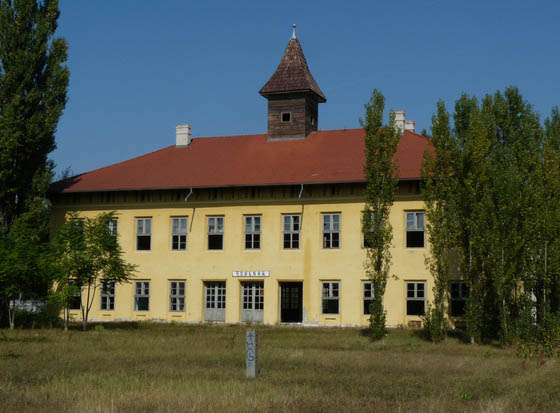
Partos Chapel – Greek Catholic Chapel
The shrine dedicated to the Visitation of Our Lady was built by a German named Kilian with the approving deed of the Vác Bishop Vilmos Leslie, dated 12 October 1717. Standing on the hillock of a former gunpowder mill, the chapel got the name of ’partos’ (sloping) and was rebuilt in 1799. Its bell was consecrated in 1814. Szolnok chief constable Mátyás Lendvay commissioned an artist from Gyöngyös to make a painting for the altar. Presently, a replica painted by Gyula Hubay in 1955, can be seen behind the altar.
By the middle of the 19th century, the chapel was in a dilapidated condition. It was renovated in 1869, and the thatched roof was also replaced. Its re-consecration took place on 2 July 1870, the day of the Visitation of Our Lady. In 1916, some soil was also taken from this hillock to Budapest to form the Coronation Mould for Charles IV before his accession to the throne.
A cross was fixed above the entrance for the first time in 1856. The original wooden cross was replaced for stone in 1929, and the crosses of the two thieves erected next to it.
In the same year it was renovated again. A full-blown overhaul took place after 1989. Following the formation of the fragment parish and the Greek Catholic Parochy, lithurgic service was administered on Sundays and holidays until 2006. The renovation was completed in 1993: the timbering of the roof was brougth from Máriapócs, constituting parts of the field altar erected for the papal visit in 1991, as a gift to the parish community. The renovations were organised and carried out by the Greek Catholic parochist György Jaczkó.
Address: Szolnok, Nyíl Str.
Memorial to the Battle of Szolnok
The monument commemorates the Battle of Szolnok when the Hungarian defence forces led by General János Damjanich won a victory over the Austrian army. This battle became the starting point of the ’glorious spring campaign’.
The memorial can be found in Szolnok, on Szabadság Square, at the foot of the Tisza Bridge and was erected in 1886, to the memory of the battle fought on 5 March 1889. It was created by the sculptor Antal Gerenday and renewed with the help of sculptor Ferenc Simon in 1985. Today, we find a replica in the place of the upper sculpture made by stone carver Zoltán Benke, while the damaged original can be seen at the Artists’ Colony, in front of the ruined tower.
Address: Szolnok, Szabadság tér
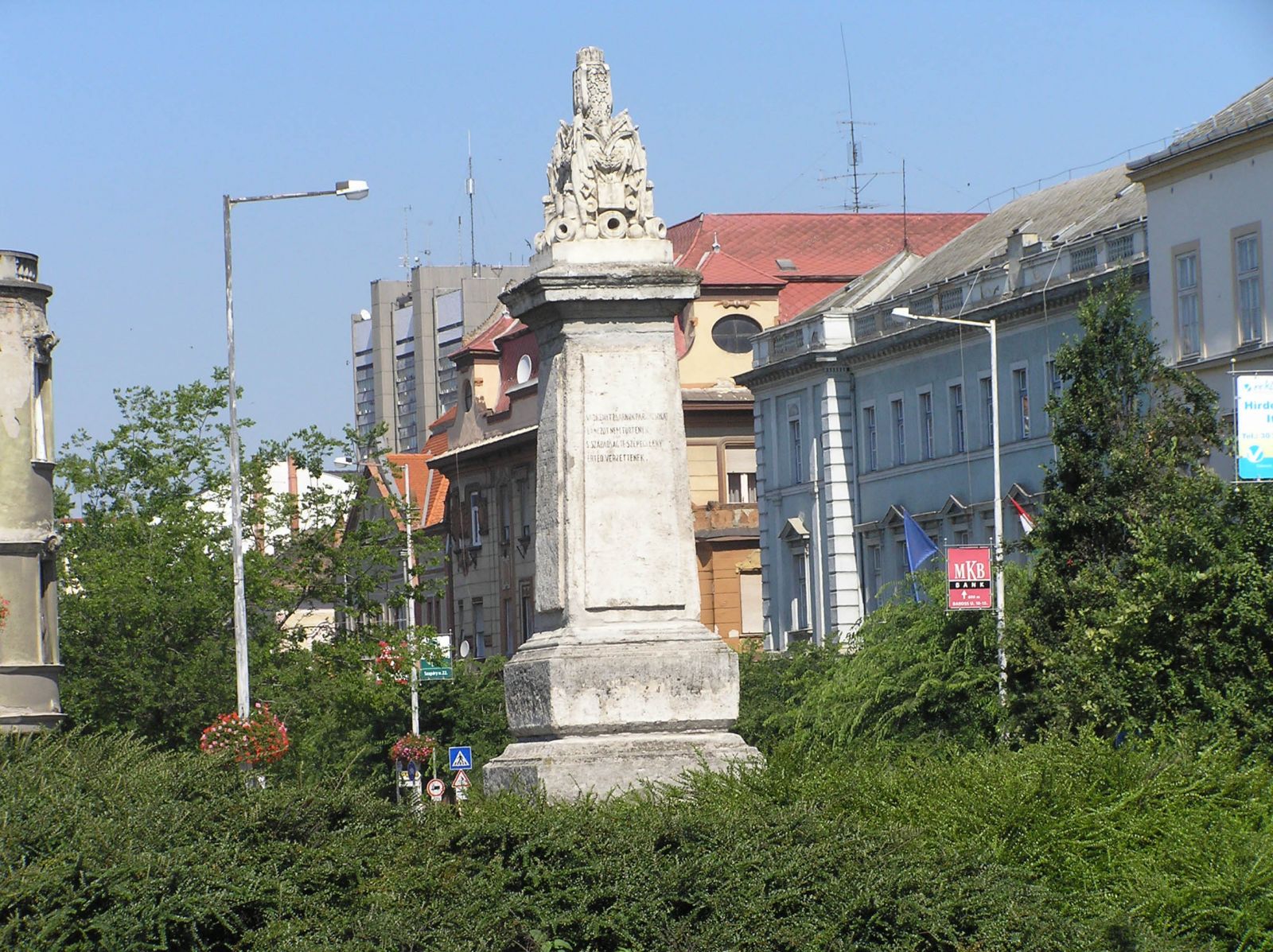
Tabán folklore house
Tabán is the oldest part of Szolnok, which used to be the fishermen’s quarter and still preserves its atmosphere with its winding, narrow streets. The folklore house – operated by Damjanich Museum – takes the visitor back to these times, the interior and furniture reflects the peasant civic style of the 1930s. The millieu of Tabán gave inspiration to a lot of people and became one of the favourite themes of the painters of the Artists’ Colony.
The small exhibition has been operating as a folklore house since 1933, and also displays the traditional tools of fishermen of that period.
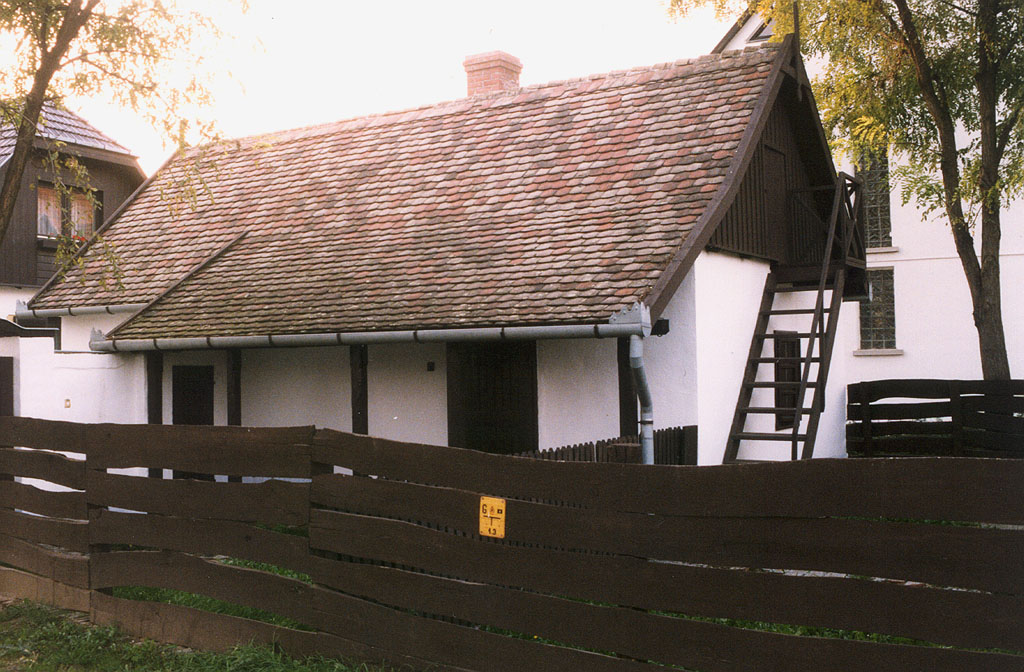
County Casino – Home of Science and Technology
The building of the former County Casino in eclectic style dates from 1894, and forms a valuable group of monuments with the impressive County Hall on its side.
The corner entrance provides the symmetry axis for the well-proportioned, L-shaped, two-storey building further accented by the rounded balcony and its heightened cupola with ornamented copper roofing. Today, the building houses exhibitions, conferences and various other events.
Address: Szolnok, 4, Kossuth L. Str.
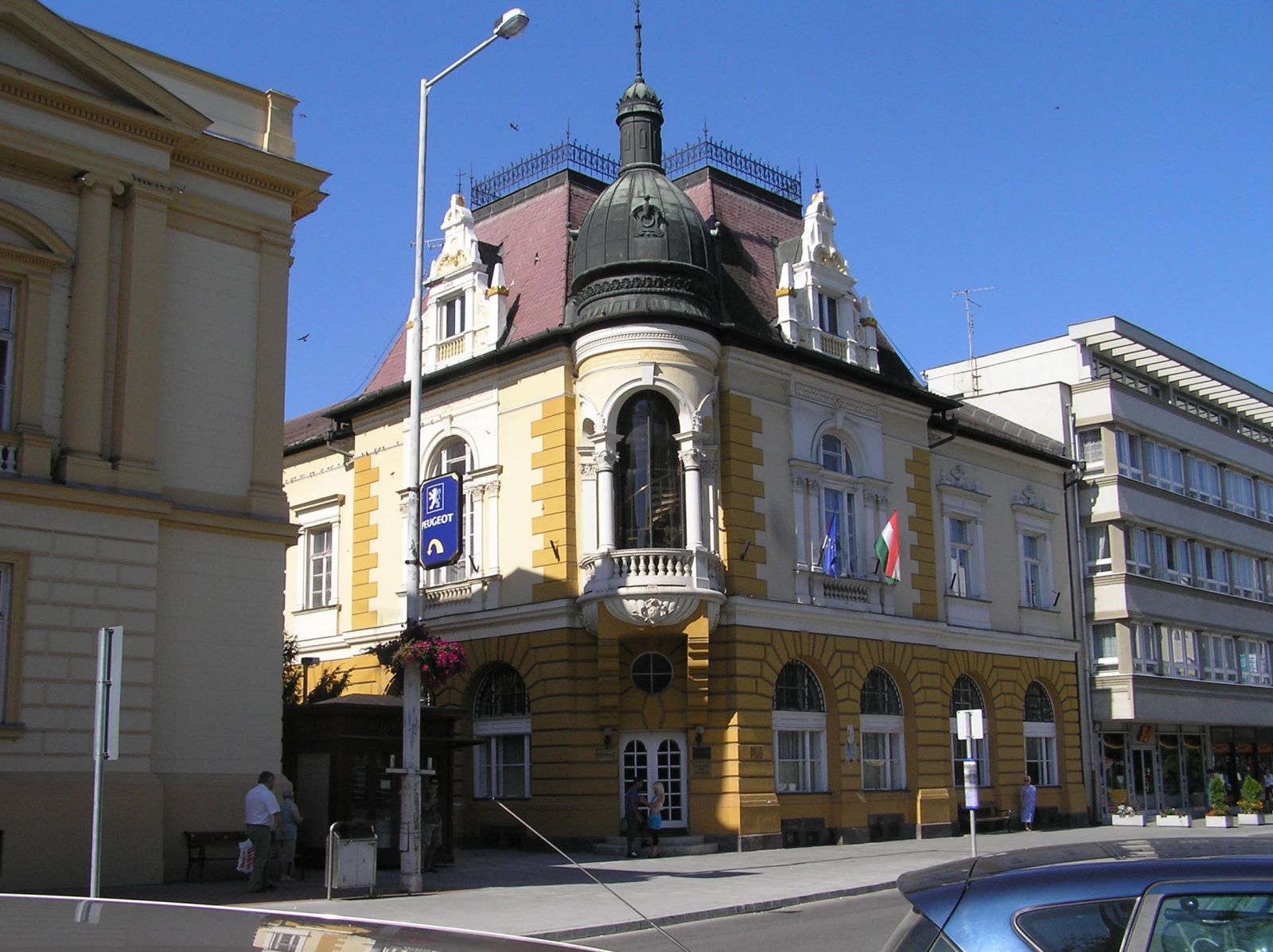
Castle Church – Roman Catholic Church
From the outside the church shows the Classicist features of its age, but the interior including the main altar, the pulpit, the benches and the altar rail are of the Empire style.
The Christian church (of Our Lady) stands on the site of the former castle. It was built on the designs of Ferenc Homályossí and completed in 1824. It is interesting to note that in its construction they used the stones from the ruines of a Turkish mosque and the remains of the former Medieval church that stood nearby.
Visits by appointment.
Address: 5000 Szolnok, 2, Szent István Square.
Telephone: 56/425-539
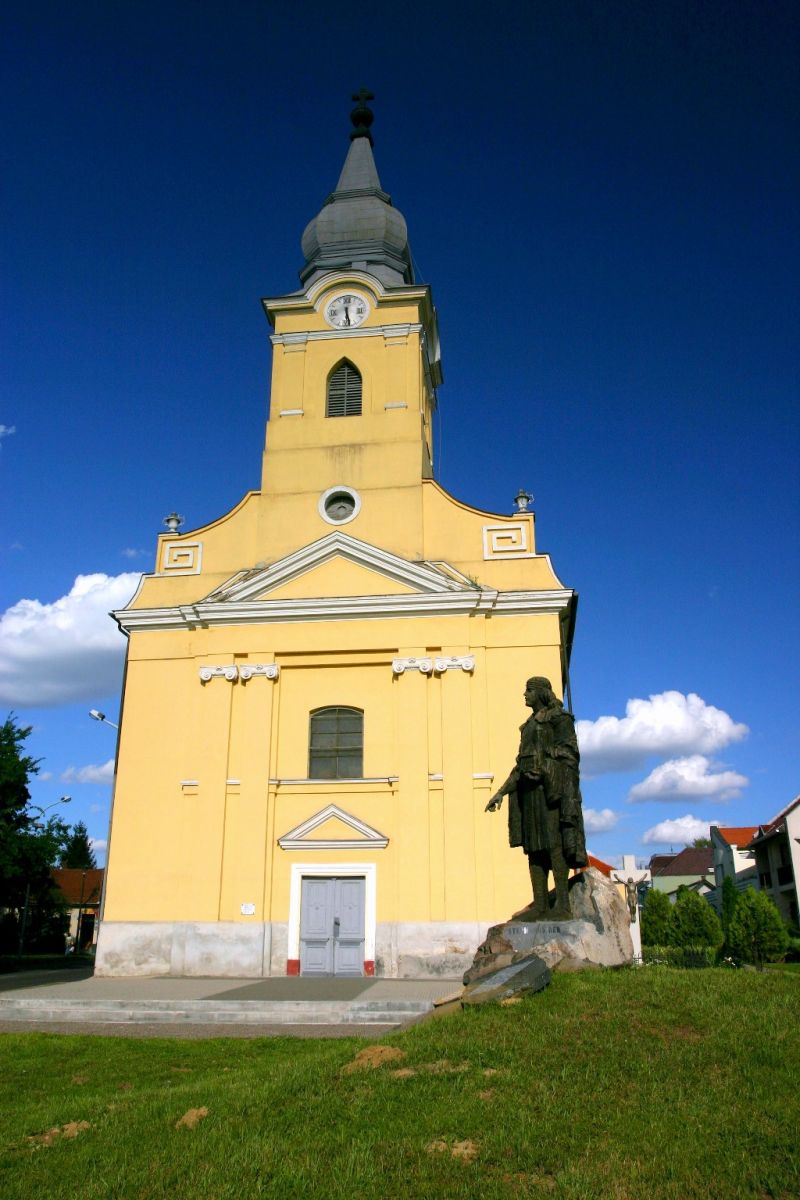
Building of Ferenc Verseghy Secondary Grammar School
The Szolnok Verseghy Grammar School is one of the oldest grammar schools of Jász-Nagykun-Szolnok County with great traditions. Founded in 1831, and has born the name of the famous native of the town, the neologist linguist and poet Ferenc Verseghy, since 1922. Its mellowed building completed in 1888, stands on the most beautiful spots of the town, on the bank of the Tisza River, right across the Szigligeti Theatre.
Address: Szolnok, 1, Tisza Park
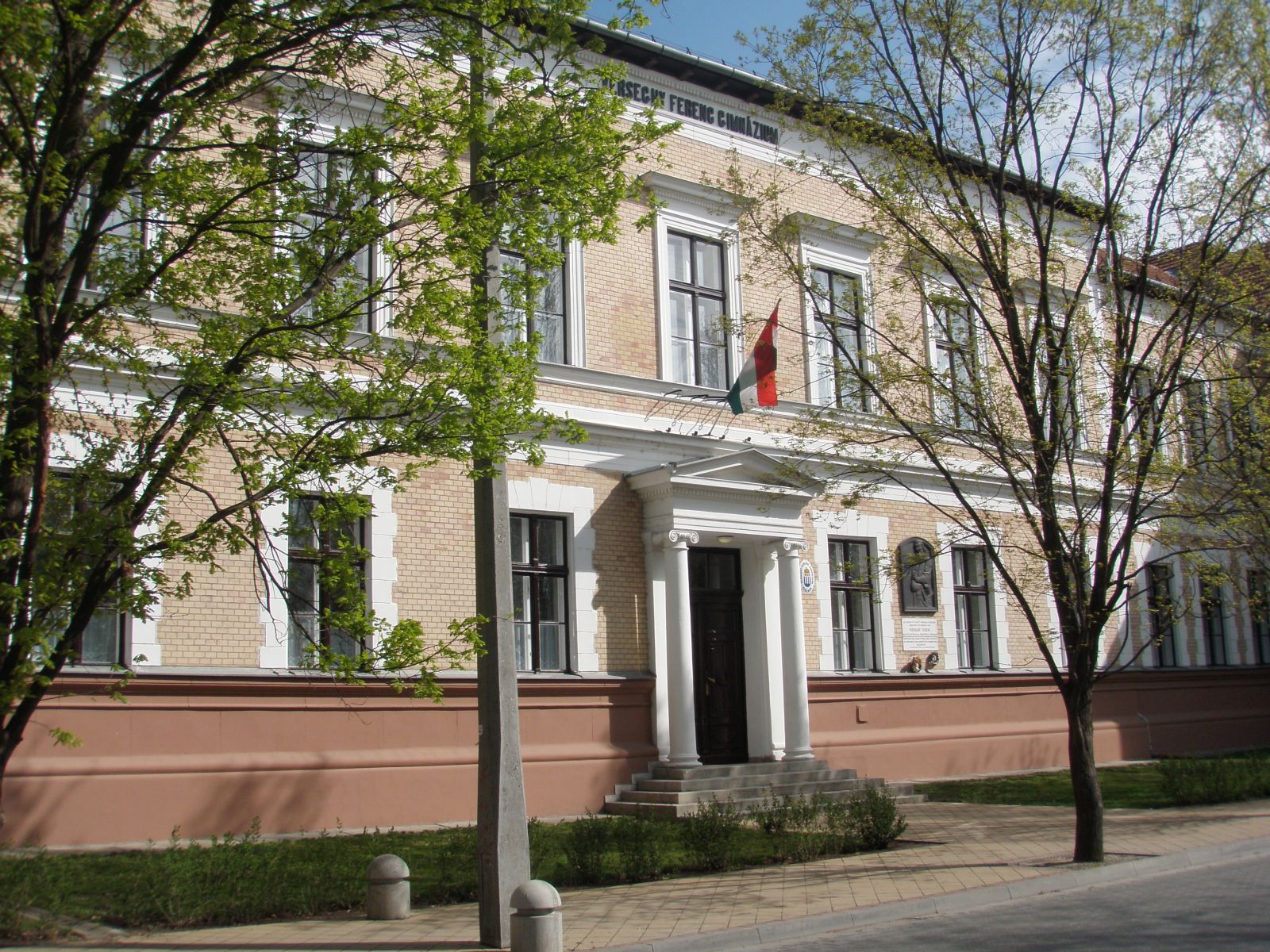
Water Tower (Hydroglobe)
Standing in the heart of the town, the hydroglobe on Eötvös Square was built by the company of Ede Ast & Partners between 1909 and 1910. The tower, which was built employing the then modern technology of ferro-concrete, is 36 metres high and served the residents of Szolnok for more than sixty years. The octagonal shaped tower supported by eight concrete pillars had a storage capacity of 600 cubic metres.
The head of the building also served as an observation tower for the local fire brigade between 1924 and 1932. The tower got badly damaged in a British carpet bombing raid during World War 2, and the reconstruction was not completed until 1956. After that, the tower operated for an additional tewnty years.
Address: Szolnok, Eötvös Square
Saint Francis of Xavier Chapel
To the memory of the passage of a devastating plague in 1733, a votive chapel was erected in 1749, and Francis of Xavier chosen as its protective saint.
The recurring, destructive bilious gland (plague) epidemic hitting the country in the early 1700s did not spare the population of Szolnok, either. In this hopeless situation there was only one way of survival to ask the assistance of powerful mediator. This mediator was no one else than Saint Francis of Xavier who right after his death in 1552, had been appealed to by people fearing contageous diseases all over the world.
Getting rid of the plague, the people of Szolnok decided to erect a chapel in veneration of Saint Francis of Xavier and to the memory of the deceased in 1733, with approval of Mihály ab Althann, Bishop of Vác. The chapel was built outside the pertimetres of the town, where the victims of the plague were buried. Due to the expansion of the town the chapel today lies in the centre of it. It was consecrated in 1735, with superior approval by Father Miklós Tuchinszky, Szolnok parochial administrator.
Address: junction of Ady Endre and Kápolna Str.
Web page: www.szxszfk.eoldal.hu





